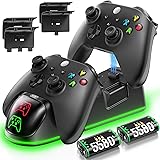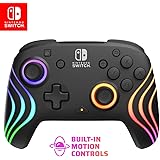Unpacking the Magic: How Your PS4 Video Game Controller Really Works
Modern video game controllers are far more than simple input devices; they are intricate pieces of engineering that translate your every command into seamless on-screen action. The video above offers a fantastic glimpse into the internal components of a PlayStation 4 DualShock controller, demystifying the technology that powers your gaming adventures. This deep dive will further explore how each crucial element contributes to the immersive gaming experience we all cherish, expanding on the concepts introduced in the video to provide a comprehensive understanding of your favorite PS4 controller.
The Core Anatomy of a PS4 DualShock Controller
When you hold a PS4 controller, you’re interacting with a marvel of miniature electronics designed for precision and durability. The outer plastic housing, while appearing simple, encases a complex ecosystem of components, each playing a vital role. Peeling back the layers reveals a sophisticated layout where form truly meets function, enabling everything from rapid button presses to subtle analog movements.
At the heart of the PS4 controller’s operations lies the primary Printed Circuit Board (PCB), which serves as the central nervous system. This board is home to the microcontroller unit, often considered the “brain” of the controller, interpreting all inputs and relaying them to the console. Furthermore, it houses the wireless communication microchip and antenna, facilitating seamless, untethered gameplay through a reliable connection. Essential ports such as the headphone jack and the EXT port are also integrated here, offering versatile connectivity options for various accessories and audio needs.
Beneath the main PCB, you’ll discover the rechargeable lithium-ion battery, providing the necessary power for extended gaming sessions. Adjacently, small motors equipped with off-balance weights are strategically placed on both sides of the midframe. These components are responsible for the controller’s haptic feedback, vibrating precisely to enhance immersion, whether it’s the rumble of an in-game explosion or the subtle feedback of a close-range hit. Consequently, these vibrations add a tangible dimension to the digital world, drawing players deeper into the action. Lastly, a daughterboard typically handles the micro USB charging port and the distinctive multicolor LED, which illuminates the controller’s light bar, often used for player identification and in-game cues.
Key Internal Components:
- D-pad, Triggers, & Buttons: The primary interface for command inputs.
- Conductive Rubber Button Gaskets: Create a circuit when pressed, registering input.
- Flexible Plastic Contact Board: Contains traces that form the circuit with the gaskets.
- Touchpad & Speaker: Provide unique interactive and audio elements.
- Midframe: Structural support for internal components.
- Primary Printed Circuit Board (PCB): The central hub for all electronic components.
- Microcontroller Unit (MCU): The “brain” that processes all inputs.
- Analog Joysticks: Allow for precise, variable movement inputs.
- Wireless Communication Microchip & Antenna: Enable wireless connectivity.
- Headphone Jack & EXT Port: For audio and accessory connections.
- Audio Codec Microchip: Manages audio signals for the headphone jack.
- Accelerometer & Gyroscope Microchip: Detect motion and orientation for motion controls.
- Rechargeable Lithium-ion Battery: Powers the controller.
- Vibration Motors with Off-Balance Weights: Generate haptic feedback.
- Daughterboard with Micro USB Port & Multicolor LED: Handles charging and the light bar.
The Simple Science of Button Presses
Every time you press a button on your PS4 controller, you are completing a small electrical circuit, much like flipping a light switch. For the standard face buttons (X, Circle, Square, Triangle), the D-pad, and other push buttons, this mechanism is remarkably straightforward. It involves three key elements working in unison: the plastic button face, a conductive rubber button gasket, and a flexible plastic contact board.
On the contact board, delicate electrical pathways, or traces, are insulated by plastic and run beneath each button. There’s a tiny gap in these traces directly under the button, effectively breaking the circuit and preventing electricity from flowing. When you depress a button, the conductive pad on the bottom of the rubber gasket bridges this gap. This action allows electricity to flow, completing the circuit and sending a signal to the microcontroller. Consequently, the game registers your input, whether it’s jumping, attacking, or navigating a menu.
Releasing the button causes the rubber gasket to return to its original shape, lifting the conductive pad away from the contact board. This breaks the circuit once more, stopping the flow of electricity until the next press. In contrast, the L2 and R2 triggers employ a more nuanced approach. Instead of a simple open-or-closed circuit, these triggers utilize pressure-sensitive resistors. As you press an L2 or R2 trigger, the force applied to this resistor changes its electrical resistance, which the microcontroller accurately measures. This allows for variable inputs, such as gradually accelerating a vehicle or precisely aiming a bow, adding a layer of depth and realism to your interactions. Therefore, understanding this difference highlights the ingenious engineering behind responsive gameplay.
Mastering Movement: The Analog Sticks’ Secret
Analog sticks are perhaps the most complex yet intuitive components of a video game controller, allowing for fluid, directional movement that goes far beyond simple button presses. Each analog stick is a miniature mechanical and electronic marvel, packed with nearly a dozen different parts working in concert. These components translate subtle physical movements into precise digital commands, enabling intricate character control and camera manipulation within virtual worlds.
Beneath the rubber thumb pad and plastic joystick shaft, a metal housing defines the limits of the stick’s movement. Inside, a crucial pair of plastic brackets, known as followers, are oriented perpendicular to each other. These brackets are ingeniously designed to convert the up, down, left, and right movements of the analog stick into a small rotational motion. Each follower bracket is meticulously attached to a potentiometer, a variable resistor specifically engineered to measure rotation. When you push the analog stick in any direction, these brackets rotate, which in turn rotates the central shaft of the respective potentiometers, altering their electrical resistance.
The core of a potentiometer contains a small metal piece called a wiper, which moves along a resistive track—a material printed in a set of two circles. The key concept here is that electrical resistance is directly proportional to the length of the resistive material that electricity flows through. As the wiper rotates, its contact point on the track changes, effectively varying the length of the resistive material in the circuit. This change in resistance is then precisely measured by the microcontroller. The wiper’s unique design ensures it continuously presses against the track at exact locations, allowing for incredibly accurate measurement of joystick movements. This precision is absolutely critical in competitive gaming, where even a tiny miscalculation can be the difference between victory and defeat. Moreover, each potentiometer utilizes a set of three terminals: one connected to the wiper, and two connected to opposite sides of the resistive track to measure movement along a specific axis, such as left-to-right or up-and-down. These four potentiometers (two per stick) work in unison to track movement across a full 360-degree range, offering unparalleled control. Furthermore, a small push button assembly is often located beneath the analog stick, registering a distinct “click” when the stick is pressed inward, commonly used for actions like sprinting or melee attacks. A spring then ensures the analog stick always returns to its central, unpressed state, ready for your next command.
Beyond the Basics: The Unsung Heroes of Controller Tech
While buttons and analog sticks capture most of our attention, several other sophisticated technologies within the PS4 controller contribute significantly to the overall gaming experience. The wireless communication system, powered by dedicated microchips and an antenna, enables seamless connectivity without the clutter of cables. This technology has evolved considerably, offering stable, low-latency connections essential for competitive gameplay and responsive interactions. Understanding this invisible backbone underscores the controller’s ability to maintain a consistent link to your console, even in busy wireless environments.
Furthermore, the inclusion of an accelerometer and gyroscope microchip introduces motion control capabilities. These sensors detect the controller’s orientation and movement in three-dimensional space, opening up new gameplay mechanics. For example, tilting the controller might steer a vehicle, aim a weapon, or interact with environmental puzzles, adding another layer of immersion beyond traditional button inputs. This motion sensing technology allows games to respond to physical gestures, blurring the lines between player and avatar. In addition to these advanced features, the touchpad, while not always heavily utilized, offers a versatile input method for specific game functions, menu navigation, or unique interactions. It represents a step towards integrating touch-based input into console gaming, offering developers an expanded toolkit for creative design. Each of these elements, working together, transforms a simple hand-held device into a sophisticated interface for exploring uncharted digital worlds.









